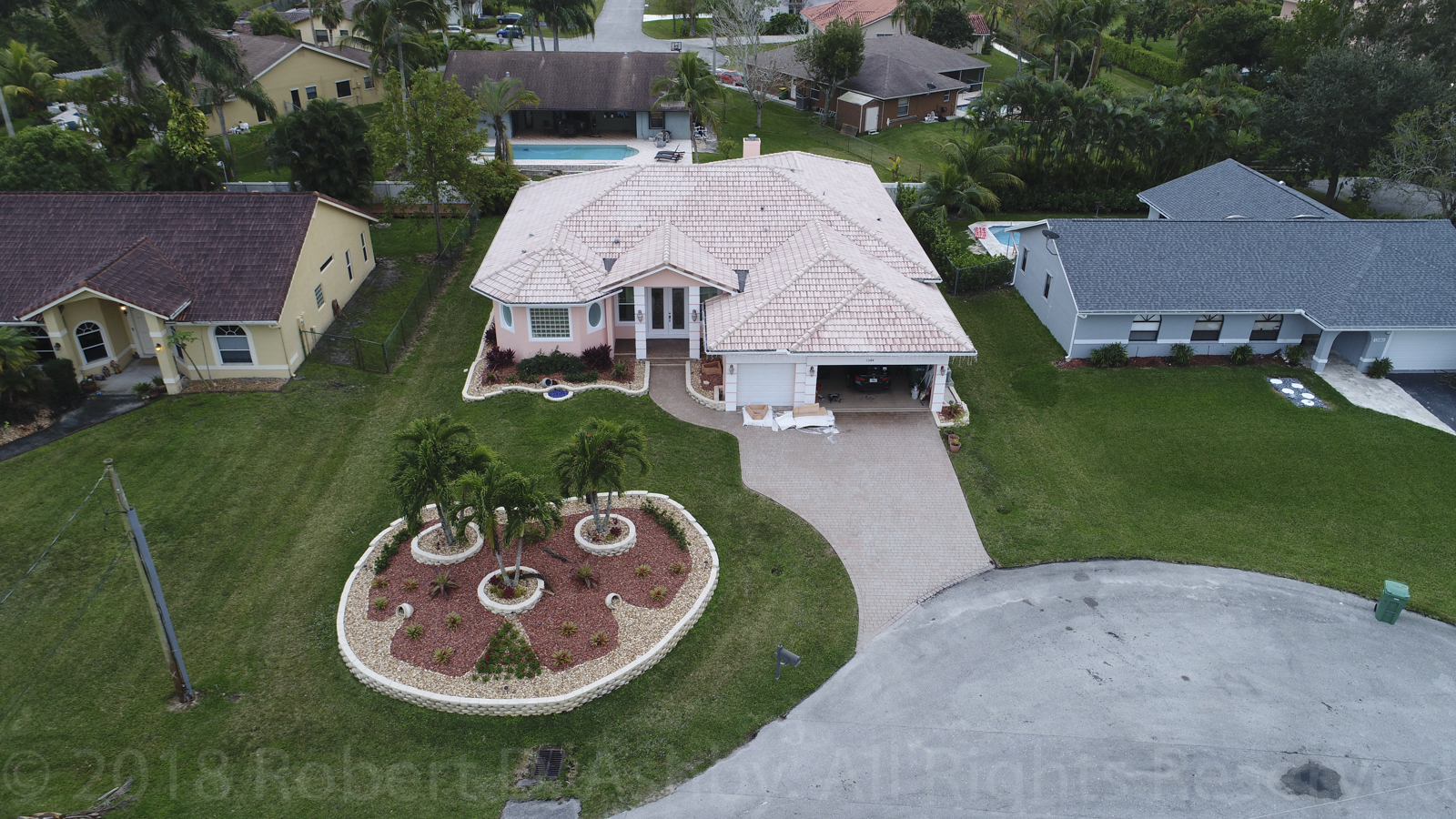OK. Didn't get a chance to fly until yesterday, and only around my house, so the photos are not the best

. I just did them quick, auto focus, auto exposure (which I normally don't do) and they are not processed other than sizing down to 1600px long side each jpgs.
Let's start off with the Phantom 4 Pro + setup...
And then the Inspire 2 X5S setup...
Switching to JPG and resizing them takes away some of their image qualities, but these would be similar size images that would ultimately be used, so I figure it is a decent enough comparison. As you can see, both images are just fine for final aerial real estate photos. Both will help sell the house and show what is nearby, etc, so you can say the P4P is adequate in this regard.
Diving into the specifics of the images, let's look at stats...
P4P: ISO100, 8.8mm, 1/80 at f4.0 for image size of 5472x3078 original size. 1" CMOS sensor.
X5S: ISO100, 15mm, 1/120 at f3.2 for image size of 5280x2970 original size. Micro 4/3 sensor.
While both images are 20mp, the P4P seems to have a slight edge in resolution, but the sensors are quite different and thus final image quality is quite different. The RAW images, and even the JPGs shot from each camera reveal these differences, but these images are less "demonstrative" of the differences. I shot these as JPGs straight from the camera, so no RAW images to work with. I did this just for this comparison, though I almost always shoot RAW. One of the biggest benefits of the X5S sensor is its dynamic range over the P4P. One other huge benefit of the X5S is the ability to change lenses, allowing for more flexibility in imagery. Another benefit of the Inspire 2 is you can change cameras even, such as upgrading to the X7 without buying a new drone.
I just did a comparison of photos and not video, and even then only JPGs. Video excels on the X5S, even without factoring in you can go to 5.2K versus 4K.
Bottom line is that the P4P is capable of most real estate photography, and even videography, so if that is your main focus for work, switching to an I2 with X5S or X7 is not required. However, if you are finicky about the highest quality and greater flexibility, especially if you are venturing beyond real estate imagery, switching to an I2 and appropriate cameras may be a wise decision.
I will leave you with this final I2/X5S image, a slightly edited image, converted to JPG, for web posting...
I hope this info helps.








